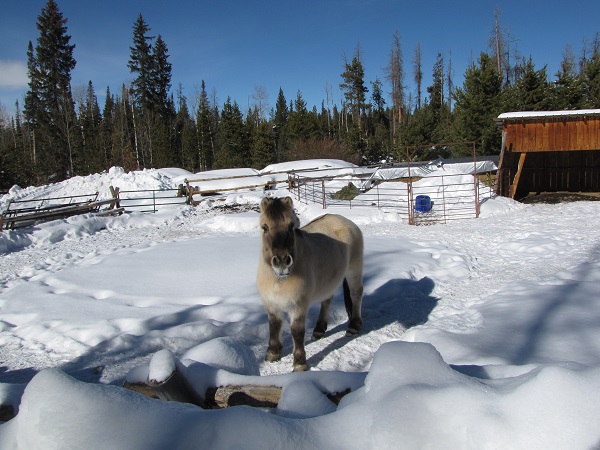Don't Drill Them 2
I am bringing my Fjord gelding Torrin back into work after a long time off. When Torrin is out of a working mindset and under saddle for the first time in awhile, he will sometimes lower his head, waggle it back and forth and then occasionally waggle his whole body before offering a small buck and then taking off at a run. I’ve worked with him long enough to arrest this sequence before it progresses too far, and when I’m successful, it will even make me laugh!
I was thinking about my work with Torrin when I wrote the article “Don’t Drill Them,” inspired by a very simple, clear, and accurate discussion of the topic by an owner of two of my ponies (click here to read it). A conventional approach to dealing with an equine who is out of a working mindset and has lots of energy is to lunge them to get their excess energy out of them or at least reduced. I’ve never ascribed to this approach. For one, I appreciate an active walk, like Torrin has, and I don’t want to work it (drill it) out of them. And second, my goal isn’t to get their energy out of them; I want their cooperation in the activity I have in mind and for them to use their energy in that activity. Lunging seems different from what I do; instead I want to work them on-line in a way that is about communication, where I can ask for their cooperation and then assess their willingness to give it.
I do put Torrin out on a circle, and I ask for particular gaits, transitions between gaits, and changes in direction. If he changes gait on his own (usually up when he’s not in a working mindset!), then I know he’s not ready to be ridden safely. In fact, he’ll often start his amusing sequence, lowering his head, waggling it back and forth, etc, including trying to take off at a run, which of course only goes as far as the end of the line in my hand (and a few steps on my part to arrest his momentum!) I will continue to ask for compliance with my requests of specific gaits, changes in gait and direction, and when Torrin chooses to work with me rather than go his own way, then we will progress to the activity I had in mind when we came together. I’m definitely not drilling him; I’m continually asking for something specific and assessing Torrin’s response.
One day I went out to work with Torrin, and he was lying down napping in the sun. I put his halter on and stepped back, inviting him to go work with me. He got up and followed me out the gate. When I put him out on a circle, it was clear I had a cooperative pony, so I mounted and took a short ride. On this day, I’m afraid if I had done much work on-line at a trot or canter, Torrin would have woken up more completely and reverted to his playful self!
Today after several days in a row of his antics on-line, Torrin showed me in an on-line session that he was willing to listen and respond promptly to everything I asked. We then took a marvelous ride with not a step misplaced. I didn’t do a prescribed number of circles at each gait or a prescribed number of gait or direction transitions; that approach feels like drilling. I did just enough to know we had two-way communication. Torrin’s response was feedback that not drilling works very well indeed.
© Jenifer Morrissey, 2019
There are more stories like this one in my book The Partnered Pony, available internationally by clicking here or on the book cover.

